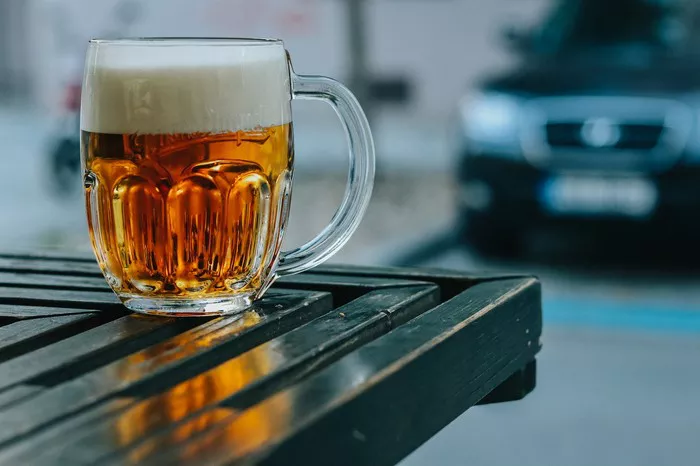In the realm of craft brewing, innovation is the cornerstone of creativity. Among the myriad techniques employed by brewers, double fermentation stands out as a method that elevates complexity and depth of flavor in beer. Delving into the intricacies of this process unveils a world of experimentation and artistry, where brewers harness the power of yeast to transform ordinary brews into extraordinary libations. In this comprehensive exploration, we dissect the essence of double fermentation, unravel its techniques, and uncover the diverse array of beers that undergo this transformative journey.
Understanding Double Fermentation: A Fusion of Tradition and Innovation
At its core, double fermentation is a process that involves subjecting beer to a second round of fermentation after the initial fermentation stage. This secondary fermentation serves as an opportunity for brewers to impart additional flavors, aromas, and complexities to their brews, resulting in a product that transcends the ordinary. While the concept of fermentation itself is as old as civilization, the practice of double fermentation represents a fusion of tradition and innovation, where ancient techniques meet modern ingenuity.
The Techniques Behind Double Fermentation: A Symphony of Yeast and Time
Central to the art of double fermentation is the meticulous orchestration of yeast and time. After the primary fermentation, where yeast converts sugars into alcohol and carbon dioxide, the beer undergoes a secondary fermentation to further refine its character. This process can take place in various vessels, including fermentation tanks, barrels, or even bottles. Brewers may introduce additional yeast strains, fruits, spices, or other fermentable ingredients during this stage, imparting unique flavors and aromas to the brew.
Exploring the Diversity of Double-Fermented Beers: From Ales to Lambics
The world of double-fermented beers encompasses a rich tapestry of styles and traditions, each offering its own distinctive characteristics and allure. Among the most renowned examples are Belgian ales, such as the iconic Trappist beers, which undergo a secondary fermentation in the bottle, resulting in effervescent carbonation and complex flavors. Similarly, lambic beers from the Pajottenland region of Belgium undergo spontaneous fermentation with wild yeast strains, followed by extended aging in oak barrels, yielding tart, funky brews prized by aficionados worldwide.
Innovation in the Modern Craft Beer Movement: Pushing Boundaries with Double Fermentation
While traditional brewing methods have laid the foundation for double fermentation, the modern craft beer movement has embraced this technique as a catalyst for innovation and experimentation. In breweries around the globe, brewers are pushing the boundaries of what is possible with double fermentation, incorporating unconventional ingredients and techniques to create boundary-pushing brews. From sour ales fermented with exotic fruits to barrel-aged stouts infused with coffee and spices, the possibilities are limited only by the imagination of the brewer.
See Also: Which Beer Has the Most Vitamins?
The Role of Double Fermentation in Flavor Development: Complexity in Every Sip
One of the primary motivations behind double fermentation is the quest for complexity in flavor. By subjecting beer to a second round of fermentation, brewers can layer additional nuances onto the palate, creating a sensory experience that evolves with each sip. The interplay of yeast, fermentation vessels, and adjunct ingredients imbues double-fermented beers with a depth and richness that captivates the senses, inviting exploration and contemplation with every pour.
Pairing Double-Fermented Beers with Culinary Delights: A Symphony of Flavors
The complex flavor profiles of double-fermented beers make them ideal companions for a wide range of culinary delights. Whether enjoyed on their own or paired with food, these brews have the versatility to complement and enhance a variety of dishes. The fruity acidity of a lambic beer can harmonize beautifully with tangy cheeses and charcuterie, while the bold flavors of a barrel-aged stout can stand up to the richness of chocolate desserts or savory meats. Experimentation is encouraged, as the possibilities for flavor synergy are endless.
The Future of Double Fermentation: Innovations on the Horizon
As the craft beer movement continues to evolve, so too does the art of double fermentation. Brewers are constantly exploring new techniques, ingredients, and approaches to elevate their brews to new heights. From novel yeast strains engineered for specific flavor profiles to innovative fermentation vessels designed to impart unique characteristics, the future holds boundless potential for the world of double-fermented beers. With each new discovery, brewers are pushing the boundaries of what is possible, promising an exciting journey of exploration and innovation for beer enthusiasts everywhere.
Conclusion: Embracing the Artistry of Double Fermentation
In the realm of craft brewing, where tradition meets innovation, double fermentation stands as a testament to the artistry and creativity of brewers. By subjecting beer to a second round of fermentation, brewers unlock a world of complexity and depth, transforming ordinary brews into extraordinary libations. From Belgian ales to modern sour beers, the diversity of double-fermented styles offers something for every palate, inviting enthusiasts on a journey of exploration and discovery. As we raise our glasses to toast the wonders of double fermentation, let us celebrate the ingenuity and passion that propel the craft beer movement forward, one sip at a time.


